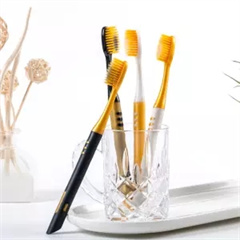Introduction: While plastic toothbrushes have been widely used for oral care, understanding their composition is essential in making informed choices about our dental health and environmental impact. In this blog post, we delve into the science behind plastic toothbrushes and their materials.
- Handle Materials: Plastic toothbrush handles are typically made from various petroleum-based plastics, such as polypropylene or polyethylene. These materials are durable, cost-effective, and easily molded into various shapes and designs.
- Bristle Materials: The bristles of plastic toothbrushes are commonly made from nylon, which is known for its durability and effectiveness in cleaning teeth. Nylon bristles come in various levels of softness, catering to different dental needs.
- BPA Concerns: Some plastic toothbrushes may contain Bisphenol A (BPA), a chemical compound used in plastics. While most toothbrushes are now BPA-free, its use was a concern due to potential health risks associated with exposure.
- Non-Biodegradability: The major environmental concern with plastic toothbrushes is their non-biodegradable nature. As they break down into microplastics, they can enter the food chain, posing risks to both the environment and human health.
- Responsible Disposal: To reduce the environmental impact of plastic toothbrushes, it’s essential to dispose of them properly. Consider recycling the plastic handle (if local recycling programs allow it) and discard the bristles in the general waste.
Conclusion: Understanding the composition of plastic toothbrushes helps us make informed decisions about our oral care choices. While these toothbrushes are effective for dental hygiene, it’s crucial to be mindful of their environmental impact and seek sustainable alternatives when possible.



















